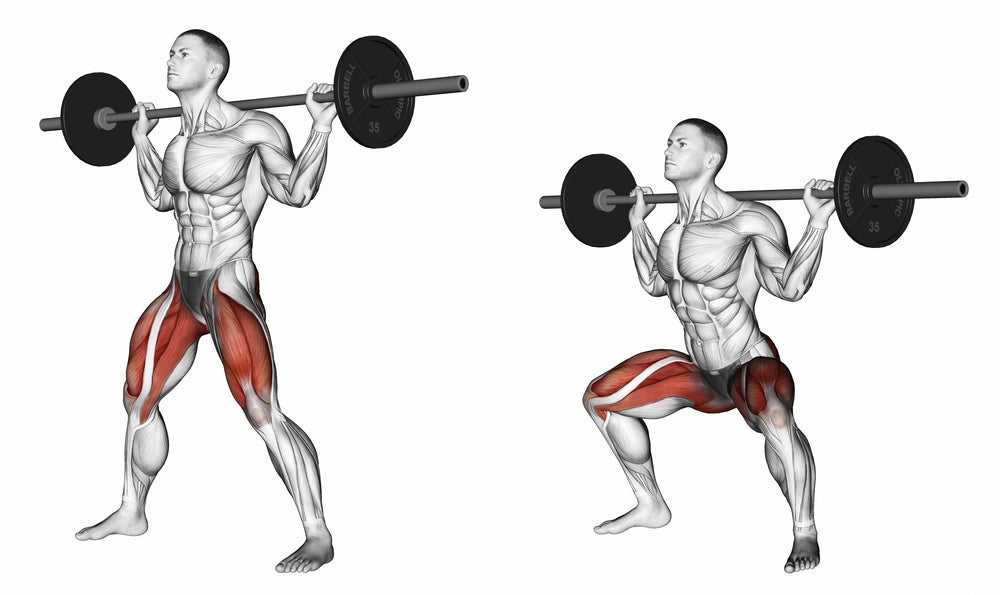Kinesiology of Exercise
Glute-Ham-Gastroc Raise
The glute-ham-gastroc raise is the only exercise that develops the hamstring muscle group from both ends in sequence, producing a maximum muscular contraction. Athletes and bodybuilders using this exercise have found it amazingly effective for development of the hamstring muscles as well as for the prevention and treatment of hamstring injuries. In addition, and perhaps most importantly, this exercise helps improve athletic performance in running, jumping and
throwing activities.

Major Muscles and Actions Involved
In the hip joint the major muscles are the hamstrings, the hamstring upper tendons, and the gluteus maximus to perform hip joint extension. In this action you raise your trunk, keeping it rigid, until it is in line with your legs. In the knee joint, the major muscles are the hamstrings and the lower tendons of the hamstrings together with the gastrocnemius muscle. They are involved in knee joint flexion, in which you raise your entire body from the knee upwards while keeping your shin in place. Note that this latter action is the opposite of what takes place in the knee curl but the action and muscles are the same.

Sports Uses
The glute-ham-gastroc raise involves movements that are important in all sports that require lifting or rising up with a normally arched back such as cleans and rising out of the squat in weightlifting , powerlifting squat and deadlift, football linemen coming off the line, and baseball fielding and catching overhead balls. The exercise actions are also important in all jumping activities, especially in jumping from a one-half to a deep crouch position. Examples of this include basketball (jumping for rebounds), volleyball (blocking and spiking), the high jump, and the standing long jump.
Exercise Analysis
- This exercise can only be done precisely on the Yessis Glute Ham machine. Other machines may look similar but cannot be used for most effective execution of this exercise because they typically do not have support for the soles of the feet or a bottom roller to secure the feet. In addition, other machines cannot be adjusted precisely for proper positioning, which is critical to safe and effective execution. Thus, to get the benefits enumerated, do the exercise as described to avoid injury.
- From physiological studies, it is well known that two-joint muscles (such as the hamstrings) will contract most forcefully when only one end is in action (shortening). Simultaneous joint action at both ends of a two joint muscle (when both ends of the muscle are being pulled to the belly of the muscle at the same time) produces a weaker contraction.
- In the glute-ham-gastroc exercise the gluteus maximus and the upper end of the hamstrings contract initially to rotate your pelvic girdle backwards. In this action, these muscles raise your trunk when your spine is kept rigid by strong isometric contraction of the erector spinae.
- When your trunk is in line with your legs, the upper hamstring tendons and muscles goes into isometric contraction to hold this position since it is impossible to execute hip hyperextension. (See previous descriptions and explanations of hip joint extension/hyperextension).
- After this, the lower end of the hamstrings (mainly the tendons and the biceps femoris) and the gastrocnemius contract to perform knee joint flexion. This action continues to raise your body, which should remain rigid. The contraction of the lower tendons of the hamstrings and short head of the biceps femoris occurs while the upper hamstring tendons and total muscle are shortened and held under maximum tension.
- This results in a "super-maximal" contraction of the entire muscle. In other words, at the end of the exercise, both the lower and upper hamstring tendons and the hamstring muscles are in maximal contraction. In this exercise both ends of the hamstrings go into contraction in sequence, not simultaneously, to create maximum shortening. This is essentially why the glute-ham-gastroc exercise is so effective for total hamstring development. It is also the reason that this exercise is used effectively in rehabilitation and for the prevention of hamstring injuries.
- For further analysis check out our premium Kinesiology of Exercise EBooks.
